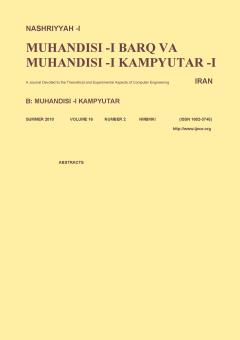-
-
List of Articles
-
Open Access Article
1 - Design of Floating-Point Multipliers with Normal and Fault-Tolerant Operations Using Reduced-Precision Computin
M. Mohajer M. Taghizadeh Firoozjaee -
Open Access Article
2 - Analyzing and Designing a Domain Specific Language to Describe Structure and Movement of Linkages
A. nourollah N. Behzadpour -
Open Access Article
3 - Power Control and Subchannel Allocation in OFDMA Macrocell-Femtocells Networks
H. Davoudi M. Rasti -
Open Access Article
4 - Hyper Spherical Search Optimization Algorithm Based on Chaos Theory
Mohammad Kalantari S. Sohrabi H. Rashidy Kanan H. Karami -
Open Access Article
5 - Proposing a New Method for Acquiring Skills in Reinforcement Learning with the Help of Graph Clustering
M. Davoodabadi Farahani N. Mozayani -
Open Access Article
6 - Data Offloading to Femtocell with In-Band Full Duplex Deployment
Mohammad Mollashahi M. Mehrjoo M. Abiri -
Open Access Article
7 - Scheduling of Modules in Fog Computing by Knapsack-Based Symbiotic Organisms Search
D. Rahbari M. Nickray -
Open Access Article
8 - A Self-Learning Single Image Super-Resolution by Considering Consistency in Adjacent Pixels
M. Habibi A. Ahmadyfard H. hassanpour
-
The rights to this website are owned by the Raimag Press Management System.
Copyright © 2017-2025







